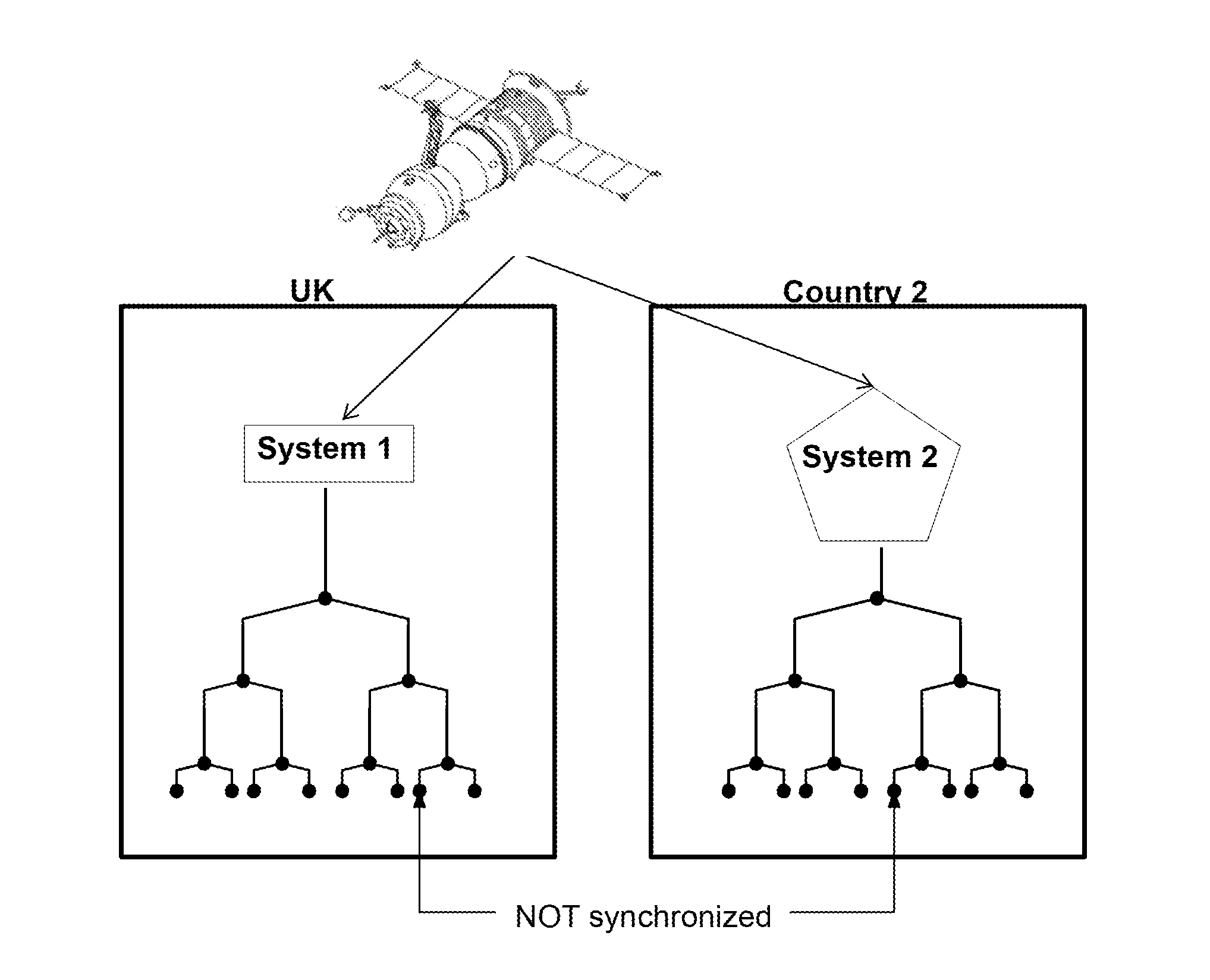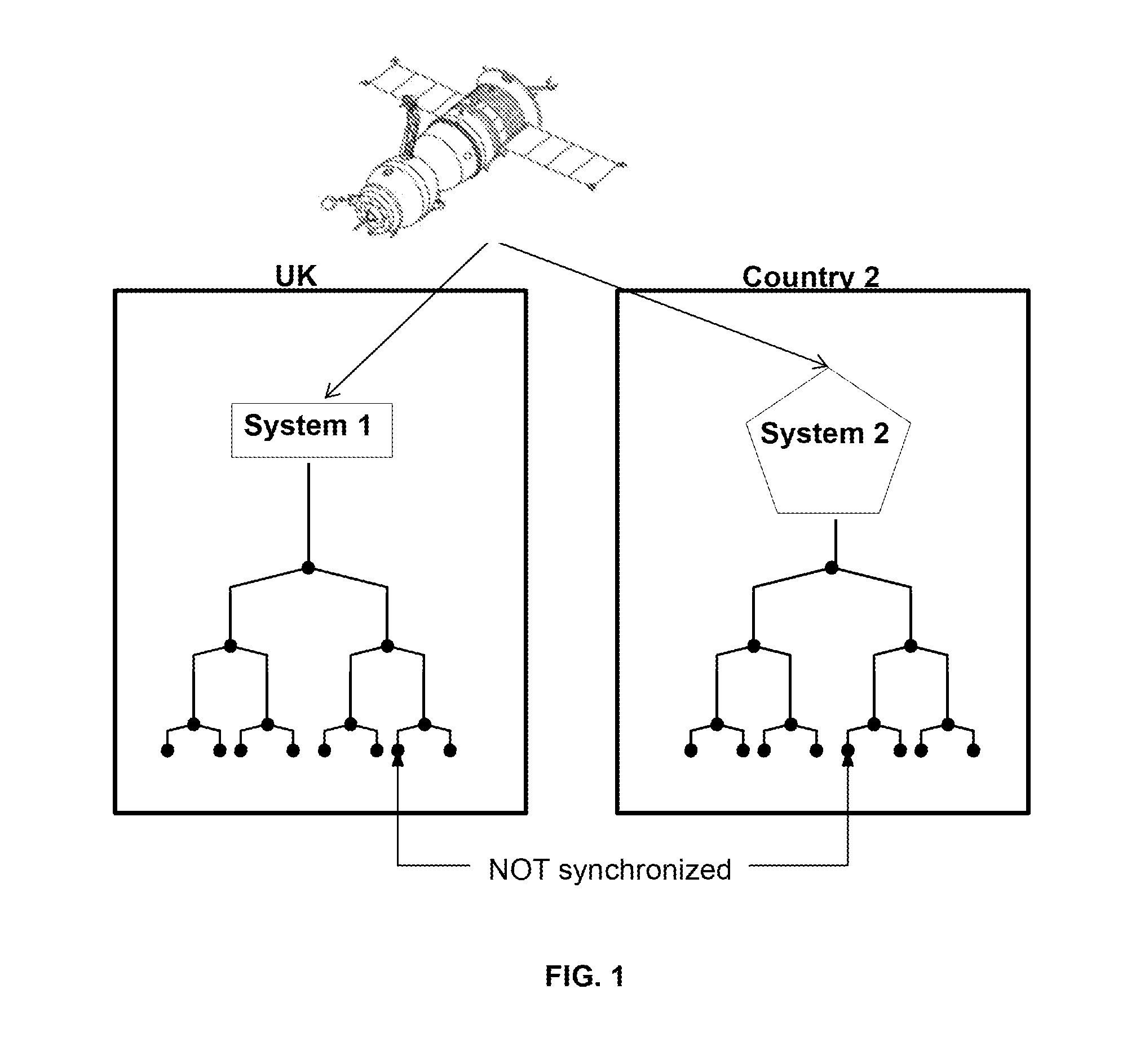Time Synchronization Control Apparatus And Method
a control apparatus and time synchronization technology, applied in the direction of electromechanical clocks, instruments, electronic time-pieces, etc., can solve the problems of manmade and natural interference, and the criticality of clock synchronization errors of this nature, so as to avoid the vulnerability experienced
- Summary
- Abstract
- Description
- Claims
- Application Information
AI Technical Summary
Benefits of technology
Problems solved by technology
Method used
Image
Examples
Embodiment Construction
[0024]Referring first to FIG. 1, this shows in schematic form an example of the existing apparatus and arrangement for providing synchronized clock signals at separate locations.
[0025]A first system (system 1) provides a reference clock signal to a plurality of local users, shown as the nodes in the left-hand box in FIG. 1. Synchronization of physically separated and unconnected networks, for example in a second country, is carried out using GPS. In this case, the system uses GPS time as the single source for each network and the Universal Time Clock. This is viable but is vulnerable to manmade and natural interferences such as jamming, spoofing, meaconing and solar storms. Additionally, the latencies introduced by each component of the receiver chain, namely antennas, cables, amplifiers, distribution systems and receivers, require careful calibration in order to understand the traceability offsets that are implemented.
[0026]Synchronization requirements on a global scale are becomin...
PUM
 Login to View More
Login to View More Abstract
Description
Claims
Application Information
 Login to View More
Login to View More - R&D
- Intellectual Property
- Life Sciences
- Materials
- Tech Scout
- Unparalleled Data Quality
- Higher Quality Content
- 60% Fewer Hallucinations
Browse by: Latest US Patents, China's latest patents, Technical Efficacy Thesaurus, Application Domain, Technology Topic, Popular Technical Reports.
© 2025 PatSnap. All rights reserved.Legal|Privacy policy|Modern Slavery Act Transparency Statement|Sitemap|About US| Contact US: help@patsnap.com



